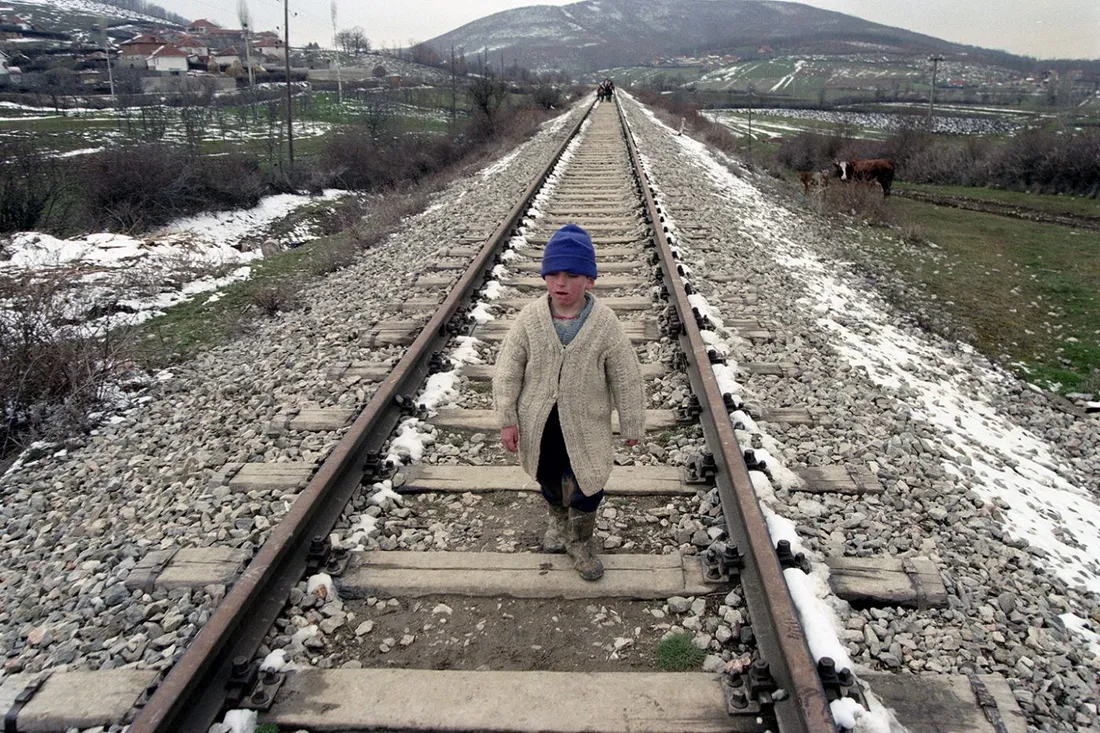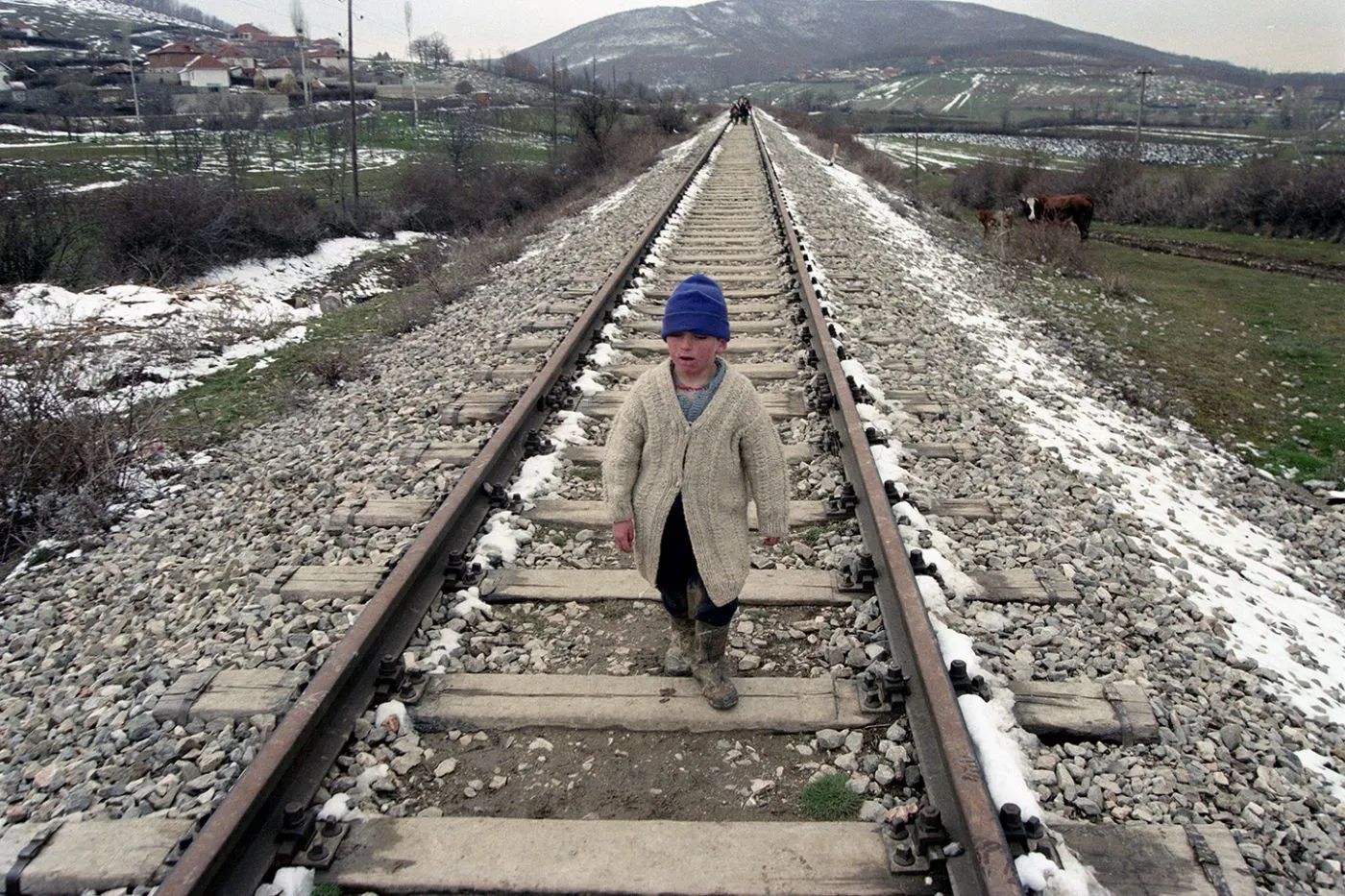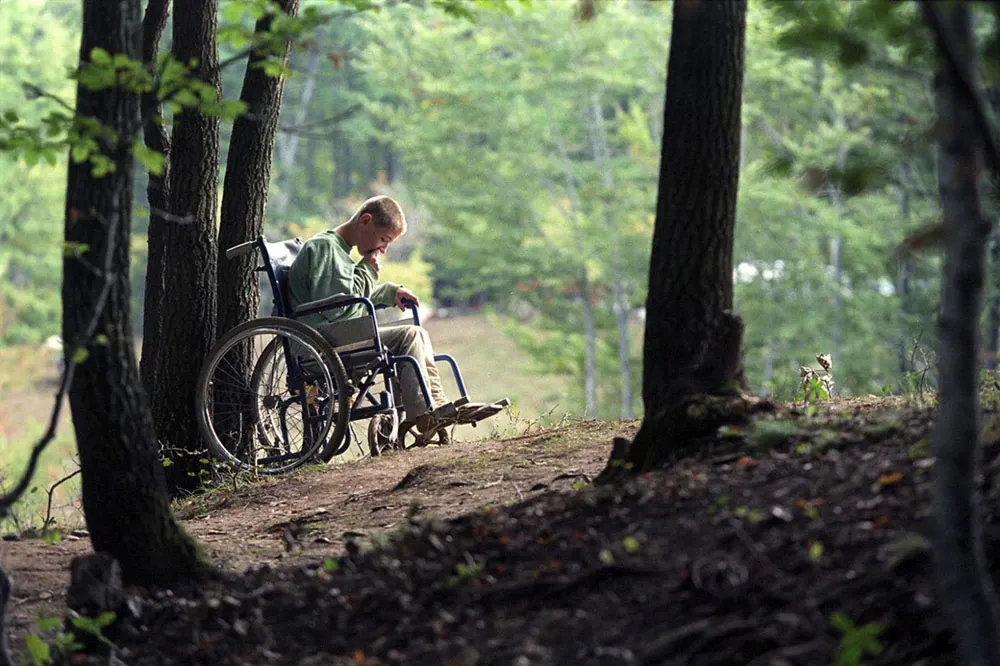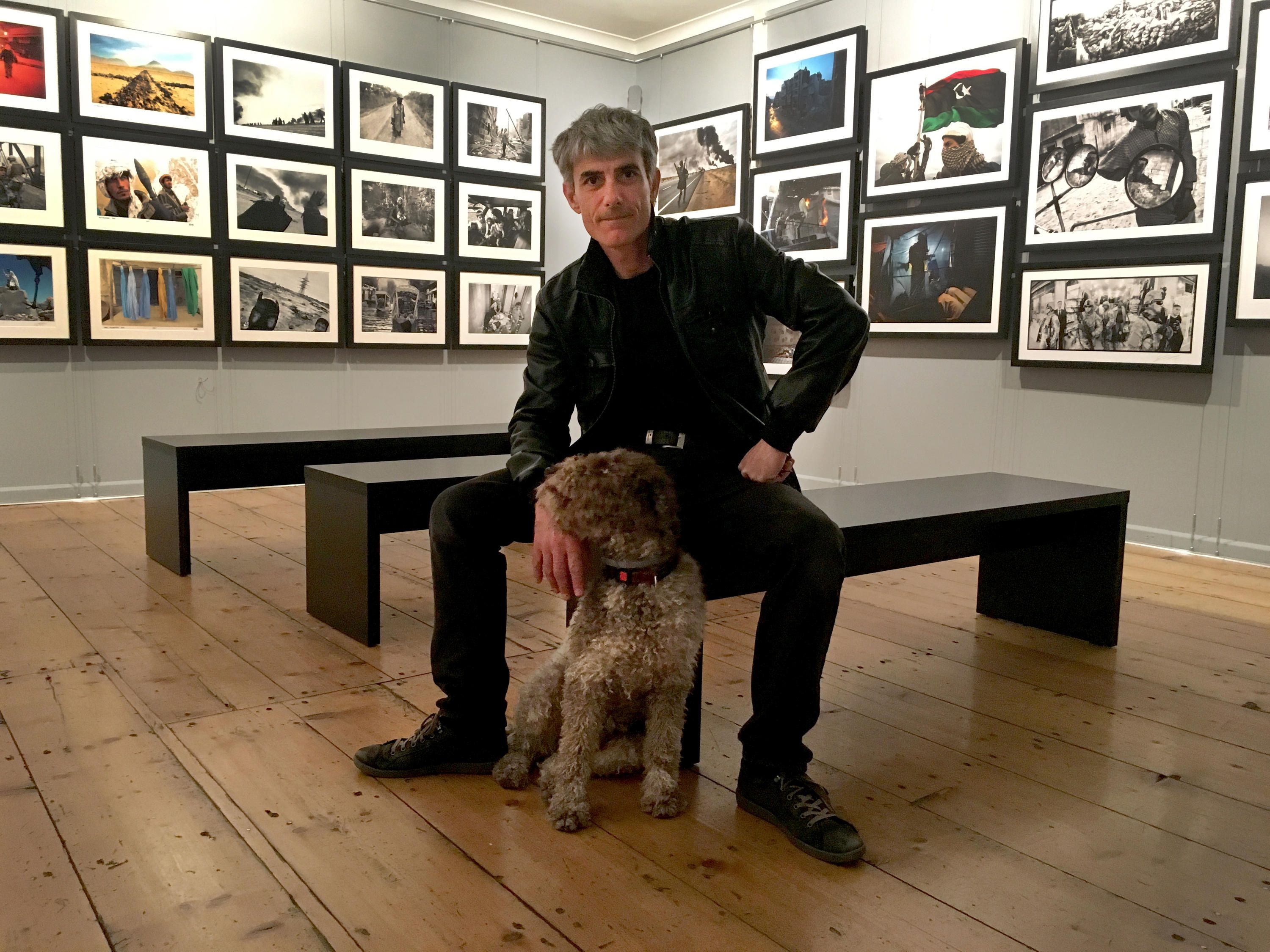Going global with Wade Goddard: kiwi open mindedness and confidence.
Written by


Wade Goddard was only twenty two when he went to Bosnia to cover the war in 1992 as a photojournalist. Other than a keen interest in photography as a teenager, the New Zealander had no experience in the field. When his friend, the photojournalist René Schùltz suggested Wade join him in Bosnia, he jumped at the chance. The pair drove across Europe from London, picked up a couple of other photographers in Zagreb, Croatia, and headed down the coast, intending to reach Mostar, Bosnia, to document how the war was affecting the city and its people.
This journey was the start of Wade’s 10-year career as a photojournalist, and is where he first learnt the ropes of the job - on the ground in a conflict zone.
Now living in Dubrovnik, Croatia, Wade runs War Photo Ltd, a museum located in one of the side-streets of the popular tourist destination of Old Town.
We spoke to Wade about his experiences working in war zones, and running a photography museum in Croatia.
How did growing up in New Zealand help with your career?
Coming from a New Zealand background, I grew up on a farm with sheep and cattle, motorcycles and horses… very free liberal background, basically could do whatever I wanted, whenever I wanted. So I guess that helps. It helps with the confidence. It helps with the open-mindedness, which is absolutely essential to have, no matter what you’re looking at or what you’re doing. You need to understand that although you might disagree with the parties you are documenting or with at the time, you’ve got to dig deep inside yourself, you don’t have to agree with them, but you have to try to understand the situation from their point of view and if you’re able to do that, you can really learn a lot about a situation.
If you’re in a situation where there are some atrocities and crimes being committed, then there’s not much to understand and if your presence is enough to be able to stop things from happening then that is a good thing. Sometimes that is not always the case. Sometimes atrocities happen because you are there. Sometimes you can be there for a reason for some idiot soldier to show off and wants to show off how strong or brave or how whatever he is.
But most of the time when you’re doing this job, you try to keep your presence to a minimum and your ideal is to shoot the situation without affecting it too much by actually being there, so learning to be invisible is something that you have to do. And when the shit hits the fan, nobody looks at you anyway, they’re more worried about themselves.
The thought of chicken and rice and mud huts with fleas with angry little stupid people with Kalashnikovs in Afghanistan, it didn’t take me too long to figure out that wasn’t really what I wanted to do.
How did you get into Mostar from Croatia?
We got just to a small village out of Mostar, which was surrounded by the Yugoslav national army at the time and there were no real free roads into Mostar – Mostar is in a basin surrounded by hills – most of them were under heavy anti-aircraft fire, so it was kind of dangerous to take the normal route in.
My friend who had more experience (I was just following along) negotiated with a local commander about taking a goat track over the top of a mountain and down the other side, which we managed to do. We got to the top of the hill, and the commander said we had to wait until it was dark enough that they can’t see us and not too dark that we fall off the road. And then he quietly told my friend that the night before he lost three soldiers that were hit by anti-aircraft fire. My friend got kind of a bad feeling about it and he decided he wasn’t going to go in, but the rest of the crew – there were two British photographers and a French photographer and myself, we took one car and we went in and there were absolutely no problems whatsoever, we were absolutely safe. So finally I was in a town that was in trouble, with a camera and I was ready to learn the business.

Photographs by Wade Goddard
Were they happy to let you into the country as media?
It was at the beginning of the war, so as soon as you turn up with a camera, particularly if you turn up on the side that feels they’re the victims, they’ll quite happily let you in so you can tell their story of hardship. It was never a problem. After three or four days of staying in a hotel in Mostar that was basically deserted, my friends decided to leave and in shock I realised I hadn’t learnt anything, hadn’t done anything, I’d just run around with a couple of soldiers, got shot at a few times and took some probably really bad pictures that were completely senseless. I decided to stay on a bit longer by myself and the others left and went to Zagreb.
I was walking the streets with some soldiers. I learnt early on to walk with locals and soldiers that know where the danger spots are and it’s never good to be alone. I was there learning Mostar and not really learning too much about photography at the time because I had no one to teach me about that particular news business side of photography. And then after a few days, maybe a week, some other journalists came into town.
Although you might disagree with the parties you are documenting ... you’ve got to dig deep inside yourself, you don’t have to agree with them, but you have to try to understand the situation from their point of view and if you’re able to do that, you can really learn a lot about a situation.
How did you come to work for international news agencies?
When you come to Zagreb as a photographer the first thing you do with your film is you go to Associated Press or a Reuters bureau and if there’s something on the film that they want, they’ll pay you for it, and that was what we were doing for almost three years. They were sending images to London. So we were freelancing and selling images for 50 Deutsche Marks an image. After a trip around Bosnia maybe we could sell five or six images each, make 600 Euro between us, which was enough to get drunk for a couple of nights, fuel the car and go back. We basically did that for three years.
Where do you get the confidence from?
I don’t know about the confidence. I guess you just have it or you don’t. I fell off motorcycles as a teenager 100 million times, but I always jumped back on.
If there’s something you want to do, you just have to go and do it. It’s nice to prepare yourself for something you want to do through education if you have that luxury. I didn’t study journalism, I didn’t go to university. Like anything, to learn a business you have to do it from trial and error and learn quick and be adaptable and be able to take criticism, rejection. How many newspapers I sent pictures to and got rejected? It’s a lot. I would just keep plugging at it.

Wade Goddard
Do you believe there is such a thing as objectivity in photojournalism?
To a certain extent I have to say there is, but it’s the photographer that chooses that moment to push the button. It’s the photographer that chooses to be in that particular place at that particular time. I think it’s better to understand that photojournalism is a relationship between the photographer and the audience.
The photographer is our eyes and ears of the story. One way or another, you take an opinion or a stance towards any particular point of the story and then not only that, after they’ve decided when, how, where to push the button there’s also a whole process of editing and caption writing that follows that, which also influences the way in which his story is presented.
What did you learn about war in your time working as a photojournalist?
I started to think what makes a person, or a population, to pick up a gun and kill their neighbours? Their best friends, their school friends? What is the formula to turn these people from loving each other in a small community to killing each other viciously? That became very much the driving force that kept me in Bosnia and Kosovo all those years.
The answer is fear. Fear is the number one guided tool that is required to manipulate and bend people from being reasonable to being extreme and it’s easy to produce, there’s plenty of it around, you can manufacture it out of thin air, it’s easy to come by, hard to get rid of. It’s amazing. Just plant some fear-induced propaganda – television, online, radio, back it up with some violence… it’s really easy to control the population. Make them repeat in days the rhetoric they hear on their own national televisions. It’s incredibly easy unfortunately.
Of course it benefitted the few elite that made a profit and power and money out of the war and the rest of them just lost and suffered losses… if they didn’t lose their houses or their family members, they lost their respect or their future, their education… just loss, war is just loss.
Why did you stop working as a photojournalist?
There was a two-pronged reason. I kind of had a little burnout after Kosovo. Kosovo was particularly hard on me and there was nothing really globally going on in the year 2000/2001, they were quite quiet until Afghanistan. I thought to myself, if I’m again to do this, after I’ve been out of the loop for at least six months to a year, to climb back to the New York Times again will take quite a bit of money and a hell of a lot of work to fight my way back to where I was during Kosovo. And the thought of chicken and rice and mud huts with fleas with angry little stupid people with Kalashnikovs in Afghanistan, it didn’t take me too long to figure out that wasn’t really what I wanted to do or who I wanted to be. Almost in unison with that decision and that period, a friend of mine brought this space in Dubrovnik. We’d been discussing a possibility of creating a museum of conflict photography so that seemed much more interesting at the time than flea-infested mud huts.
Did you have any previous experience running a museum or art gallery space?
I jumped into this project without any knowledge of business, museums or any previous education that’s going to help me run a business in Croatia, but the guy who actually owns this museum, his name is Frederic Hanrez, he’s a Belgian business man, so with his support and guidance we opened this. My knowledge of photographers and those who cover this kind of work was pretty good after all of those years of conflict in Yugoslavia, I think just about every single photojournalist and his dog at one point came through this region and I was here all of the time, I got to meet many of them and became friends with many of them. So it was a good formula, he had the space and the financial ability and I had a vision and knowledge of how it should work and what it should be showing.
How do you curate the exhibitions?
To this day I keep the exhibits very much orientated towards the voice of the photographer and the stories that are displayed here come almost completely from the photographer with as little as possible influence or guidance from me. The idea is to bring the photographer’s story directly to the public without going through an editorial process that might be in some way have its own political point of view. The idea is that the photojournalist is a storyteller, I want them to tell the story, and using images to do so. I hope that the viewers try to absorb the story first through images and then later on they can use the text that is provided to either confirm what the visual story is trying to tell them or throw them completely in the opposite direction. I kind of like that it’s the images you see first and the text is available, so it’s supposed to be a visual and in many cases an emotional journey through storytelling.
This Q&A has been edited and condensed for brevity and clarity.